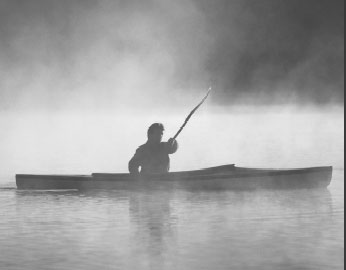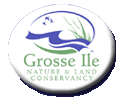

Vol. 13 No. 3
In this issue...
Reflections from the President
2004 Raptor Banding in the Grosse Ile Nature Area
A College Student's Survey of Bugs in Our Nature Area
Your Conservancy Quietly in Action
13th Annual Meeting Saturday, November 5 10AM
Upcoming Events...
November
5
Annual Meeting
10:00AM
- Noon
Centennial Farm
Fall
Hours
Nature Area Open
Saturday 10:00AM
- 2:00PM
Thursday 5:30PM - Dusk
Closed when raining
Last Day Open - October 29
2004
Raptor Banding in the Grosse Ile Nature Area
by Thomas
W. Carpenter, Ph.D.
The fall of 2004 marked an important addition to the multitude of activities that take place in the Grosse Ile Nature Area—raptor banding. Last fall, Arthur L. Carpenter and I attempted hawk banding on 8 dates: 4 in September, 3 in October and 1 in early December. A total of twelve hawks were banded and at least one hawk was banded on all but the last date (Table 1).
The 2004 banding represents an important addition to the list of sites we have used for banding in the past 25 plus years. Since 1981, Arthur L. Carpenter and I have been banding raptors during fall migration along the northwest and west shores of Lake Erie and the lower Detroit River. This banding has taken place at Holiday Beach, Ontario and in southeast Michigan at Point Mouillee State Game Area, Lake Erie Metropark and Grosse Ile. The original site used on Grosse Ile was an abandoned field south of Ferry Road; this site now supports residential houses. The Grosse Ile Nature Area thus represents one of the few remaining locations where this research can continue.
We feel that the Grosse Ile Nature Area offers much more potential than was realized in 2004 for the following reasons:
- Although
the number of hawks seen in 2004 was small, the capture success of those
detected was quite high.
- Eight
days is probably insufficient to accurately assess the site’s utility
for this project, especially considering that raptor migration begins
in early September and often continues into December.
- Based
on the limited data from 2004, the site seems to be a very good spot
to band Red-tailed Hawks (Table 1), in contrast to other sites that
we’ve tried in southeast Michigan. And significantly, in 2004 no banding
occurred in November, the best month to capture Red-tailed Hawks.
- Based
on the counts at Lake Erie Metropark, the fall of 2004 was not a particularly
good fall for raptor migration, so assessment during additional seasons
is warranted. Buttressing this statement, during the couple of dates
that the site was visited in the fall of 2003, more raptors were sighted
than on any dates in the fall of 2004.
- Last, we probably missed some low-flying hawks because of the sitdown blind used in 2004. When sitting in the blind, the gray dogwoods bordering the bay obscured visibility of hawks flying low over the bay. During observation in the fall of 2003, several hawks flew low over the bay, and would not have been detected if sitting in the blind.
Hopefully, banding during the fall of 2005 will provide a much better assessment of this site’s potential for raptor banding.
So why is this banding important? Because raptors are high in the food chain, the health of their populations is often indicative of the overall health of entire ecosystems or biomes. Therefore, regular monitoring of raptor populations is crucial for the conservation and protection of many ecosystems and the biodiversity within them. Many species of raptors breed in remote, inaccessible regions, such as the boreal forest of Canada, where it is virtually impossible to monitor their reproductive performance. Fortunately, however, most northern populations of raptors are migratory. Therefore, their populations can be monitored through counting and banding at locations that concentrate migrant raptors. The Hawk Migration Association of North America was formed to encourage the monitoring of raptors at concentration points throughout North and, more recently, Central America. This organization publishes annual summaries of these monitoring efforts in their journal, The Journal of the Hawk Migration Association of North America.
Because most raptors prefer not to cross large expanses of water, the shorelines of the Great Lakes impede, and hence concentrate, migrant raptors during both spring and fall migration, as migrants are forced to go around the various Great Lakes. Monitoring of migrant raptors at various locations along the Great Lakes shoreline is thus crucial to the conservation efforts of many raptors. Fall raptor migration in the Great Lakes region is monitored extensively. Migrant fall raptors are counted and/or banded at numerous locations along the north shores of Lakes Erie, Ontario and Superior, along the northern and western shore of Lake Michigan, and along the Mississippi River. Spring raptor migration in the Great Lakes region is much less thoroughly monitored. Extensive raptor banding and counting occurs at only two locations -- Whitefish Point in Michigan's upper peninsula, and Braddock Bay on the southeastern shore of Lake Ontario.
The raptors that migrate over the Grosse Ile Nature Area are birds impeded by Lake Erie that have followed its northern shoreline until reaching the lower Detroit River where crossing can more easily occur. Thus, banding raptors here offers an opportunity to determine the speed at which hawks migrate through the recapture of hawks banded earlier in migration along the north shore of Lake Erie in Ontario. Banding on Grosse Ile also supplements data derived from hawk counts conducted by Southeast Michigan Raptor Research at Lake Erie Metropark and Point Mouillee. Banding allows assessment of several things that counting alone cannot, such as the age and sex composition; migration routes, breeding and wintering areas through encounters and recaptures of banded individuals; longevity, and causes of mortality of migrant raptors.
|
Month
|
Day
|
Species
and Number Banded
|
Total
|
||||
|
Red-Tailed
Hawk
|
Northern
Harrier
|
Sharp-shinned
Hawk
|
Cooper's
Hawk
|
American
Kestrel
|
|||
|
Sept
|
11
|
2
|
1
|
|
|
|
3
|
|
17
|
|
|
|
1
|
|
1
|
|
|
19
|
1
|
|
|
|
|
1
|
|
|
26
|
1
|
|
|
|
|
1
|
|
|
Oct
|
3
|
|
|
2
|
|
|
2
|
|
10
|
1
|
|
|
1
|
1
|
3
|
|
|
24
|
1
|
|
|
|
|
1
|
|
|
Dec
|
5
|
|
|
|
|
|
|
|
Total
banded
|
|
6
|
1
|
2
|
2
|
1
|
12
|
